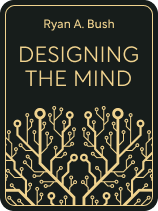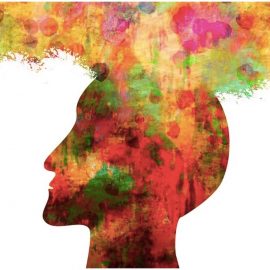

This article is an excerpt from the Shortform book guide to "Designing the Mind" by Designing the Mind and Ryan A Bush. Shortform has the world's best summaries and analyses of books you should be reading.
Like this article? Sign up for a free trial here.
What is neuroplasticity? How can you take advantage of your brain’s capacity to rewire itself?
Neuroplasticity is the brain’s ability to grow and reorganize itself in response to stimuli. According to Ryan A. Bush, the author of Designing the Mind, you can harness your brain’s neuroplasticity to rewrite your self-sabotaging mental programs and replace them with programs that prime you for success.
Here’s how you can harness the power of neuroplasticity to your advantage.
The Malleable Nature of the Brain
Bush argues that the brain’s neuroplasticity or malleability—which neuroscientists call neuroplasticity—has evolutionary roots. Our ancestors frequently had to adapt to changing conditions, so their brains also had to restructure and adjust to support their survival. Even today, by default, we’re constantly creating new neural pathways through our experiences—pathways that are strengthened or weakened as we learn and practice different thought processes and behaviors.
(Shortform note: We experience the evolutionarily-rooted benefits of neuroplasticity starting in infancy, and it continues to help us throughout our lives. As Bush states, neuroplasticity allows us to learn new things and improve our cognitive abilities, but that isn’t all it does: It also helps us recover from trauma like strokes and traumatic brain injuries, moving important functions to undamaged areas of the brain when functions in damaged areas are lost. To actively improve your brain’s plasticity, stimulate it with challenging activities that require focus, like reading or learning a new language. Additionally, incorporate novel experiences into your life, like traveling to new places. Finally, get plenty of sleep and exercise regularly.)
To modify your mind and harness neuroplasticity with intention, Bush notes, start by studying your current thought patterns. What kind of judgments do you make about different situations, places, and people? Consider your mental processes like an outside observer, with the recognition that they don’t represent objective truth. This exercise is called metacognition, or developing an awareness and understanding of your own thought processes.
(Shortform note: In The Happiness Trap, Russ Harris describes the process of metacognition in terms of two selves: the thinking self and the observing self. Harris argues that the thinking self provides a judgmental, running commentary on events, while the observing self neutrally observes this commentary. When you can distinguish what your thinking self thinks from reality, your observing self can recognize your thoughts as mere stories your brain tells you to help you survive, rather than objective truth. You’re no longer controlled by your thoughts, and you only listen to them when they’re useful to you.)
Mindfulness practices like breath-focused meditation can be a great starting point for developing metacognition since they allow you to pay attention to your thoughts and feelings without judgment. (Shortform note: If you’re unfamiliar with mindfulness and don’t know where to start, consider joining a meditation group in your community to learn more about the practices that are available. Additionally, you can find many different mindfulness resources on YouTube or through wellness apps like Calm.)
In the rest of this guide, we’ll discuss specific strategies you can use to rewrite your default programming on three levels: thought patterns, emotional responses, and behaviors.

———End of Preview———
Like what you just read? Read the rest of the world's best book summary and analysis of Designing the Mind and Ryan A Bush's "Designing the Mind" at Shortform.
Here's what you'll find in our full Designing the Mind summary:
- How the mind can be reprogrammed like a computer
- Strategies to help you change negative thought patterns, emotions, and behaviors
- How to eliminate your biases to perceive reality more accurately






